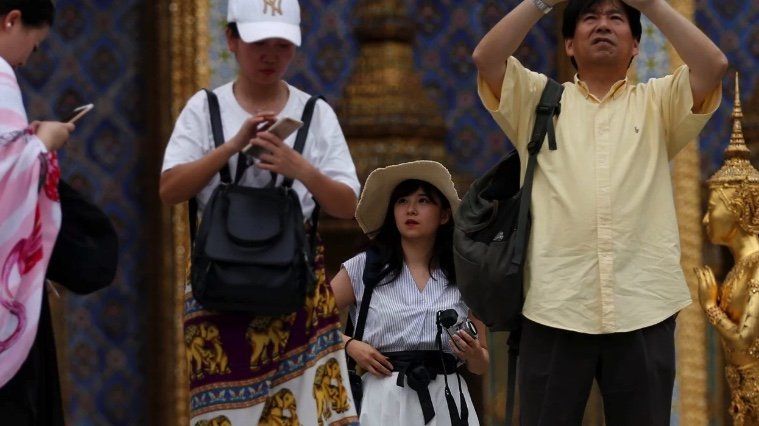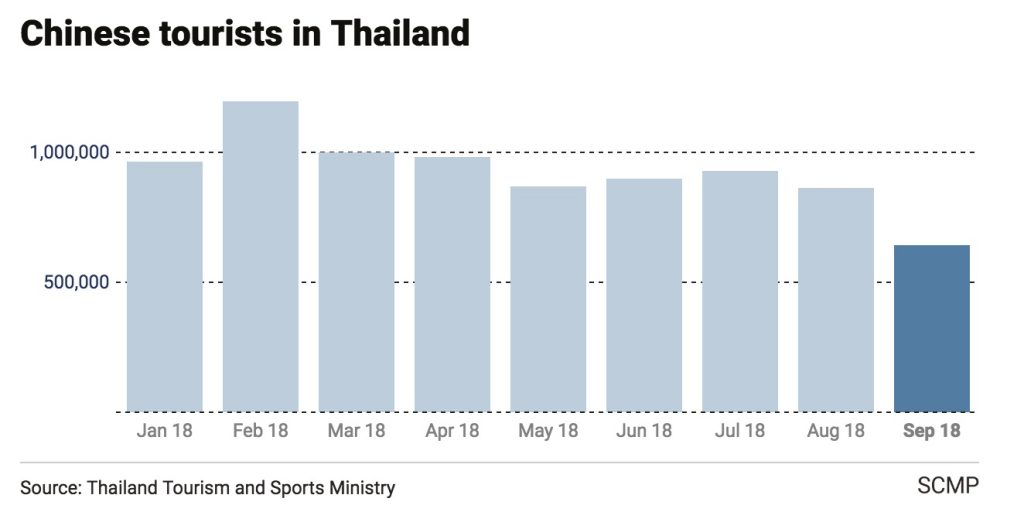
As Thai airlines post substantial losses, in part because of a lack of visitors from China, the Land of Smiles is working hard to tempt more travellers to visit..
Thailand welcomed 35.4 million international arrivals last year, making it the 10th most visited country in the world, according to United Nations World Tourism Organisation figures. The only Asian destination to outdo it was China
And all those tourists have given the Land of Smiles plenty to be happy about. Annual research published by the World Travel and Tourism Council found that tourism contributed more than 3.2 trillion baht (US$97 billion), or 21.2 per cent, to Thailand’s GDP last year, while the sector is said to account for 15.5 per cent of employment, a total of 5.8 million jobs.
Forecasts for this year predicted a similarly positive outlook across the industry, so why, as the nation’s idyllic islands and beautiful beaches prepare to enter peak season, have officials decided to waive visa-on-arrival fees for tourists from 21 countries for two months from December 1, a move normally considered by countries a little further from the beaten path?
The answer is simple: Chinese tourists, or, rather, a distinct lack thereof.
Ever since 47 Chinese visitors died in a boat accident off the coast of Phuket in July, Thailand’s biggest source of arrivals has diminished, largely due to concerns over safety and a bungled response from a Thai official who blamed Chinese tour operators for the disaster. Other PR catastrophes followed, led by a viral video of a guard at Bangkok’s Don Mueang airport slapping a Chinese visitor. The weaker yuan amid the United States-China trade war is also believed to have curbed travel from the Middle Kingdom.
According to a November 12 article in the Bangkok Post, 28.5 million overseas tourists visited Thailand between January and September, an increase of 8.7 per cent year on year. Chinese arrivals grew over the period, but dropped 8.8 per cent in the third quarter. Phuket, Chiang Mai and Pattaya have seen slumps of up to 50 per cent in Chinese visitors, according to Thai news website The Thaiger, which also maintains that the downturn is worse than official figures suggest.
On November 10, Thai AirAsia reported a net loss of 358 million baht for the third quarter, compared with a 260 million baht profit for the same period last year. Straits were even more dire at flagship carrier Thai Airways, which operated at a loss of 3.7 billion baht, double that of the third quarter in 2017.
It is not just airlines that are suffering. Speaking to The Phuket News, the president of the Association of Thai Travel Agents, Vichit Prakobkosol, said hotels, restaurants, souvenir shops and bus-charter companies were also among the businesses affected.

China, you’ll not be surprised to learn, is one of the countries to benefit from the visa-fee waiver. Hopeful the initiative will bring this year’s overall arrivals to 38.4 million, an increase on the 37.5 million tourists originally forecast by the Tourism Authority of Thailand, officials have also included on their list growing source markets such as India, Saudi Arabia and Taiwan.
However, observers note that nowhere else can make up for China’s sheer number of deep-pocketed holidaymakers. Consider that less than 10 per cent of Chinese citizens possess a passport, a number that Ctrip, the country’s largest online travel agent, expects to double within two years, and that tourists from the Middle Kingdom outspent their nearest rivals, those from the US, by US$123 billion globally in 2017.
Without arrivals from China, Thailand’s tourism sector, and the economic growth that it supports, will continue to slump. The Land of Smiles must turn the charm offensive back on; stop slapping around Chinese visitors, you hear!
— SOUTH CHINA MORNING POST






You must be logged in to post a comment.